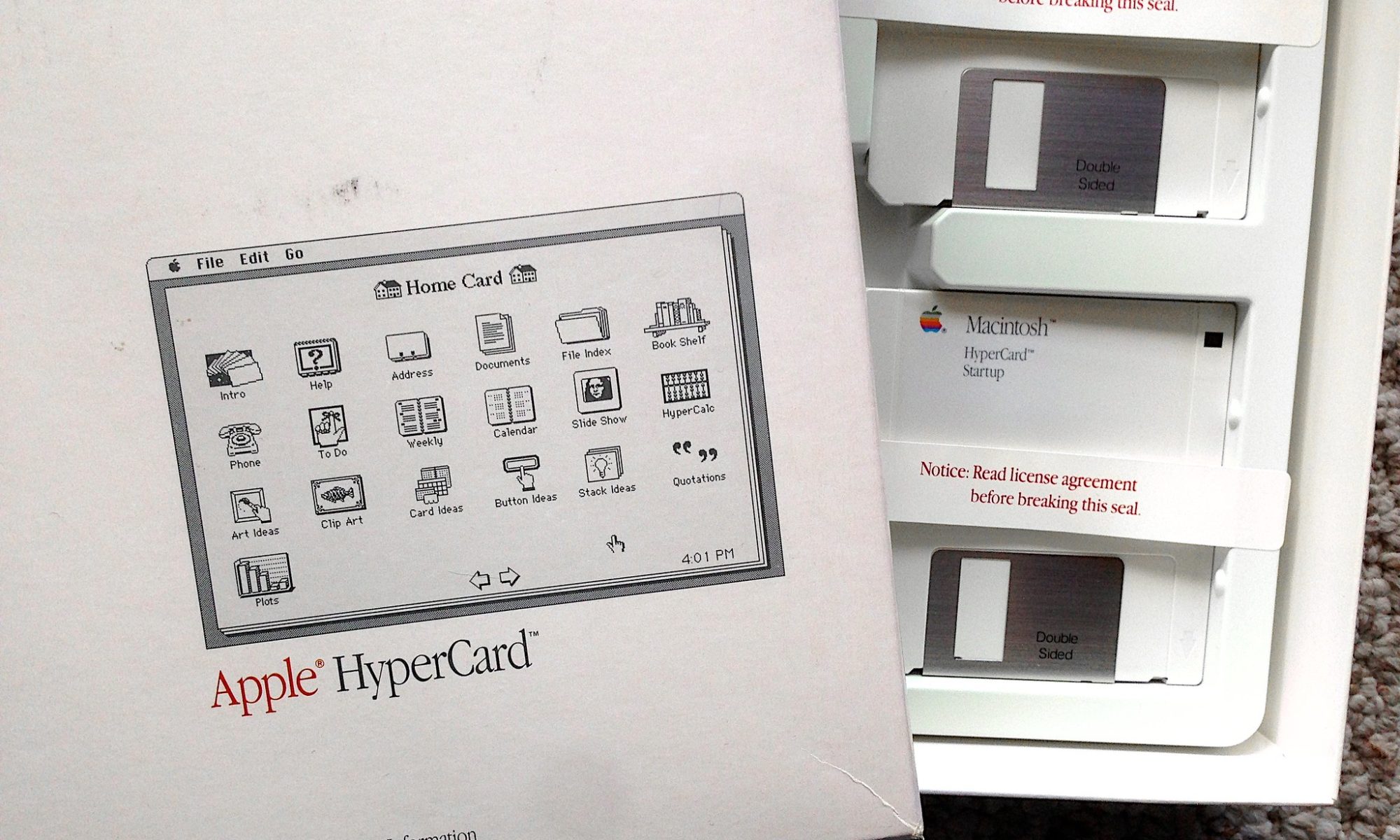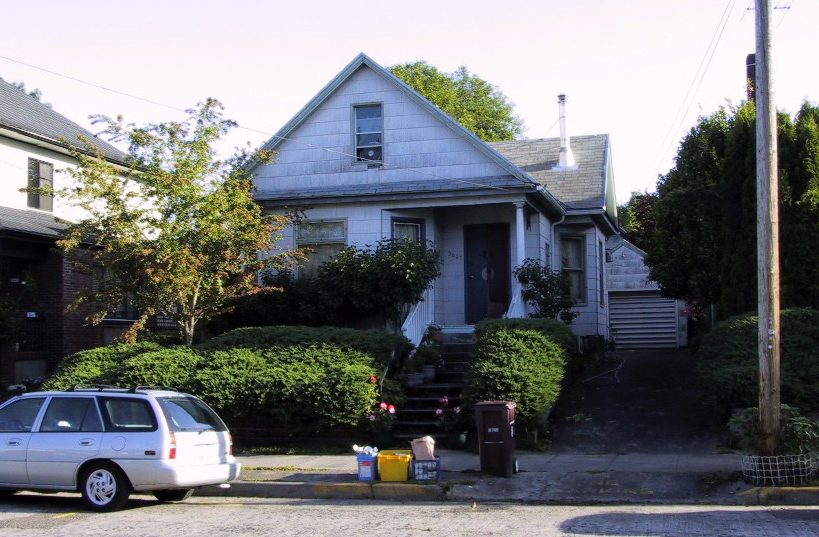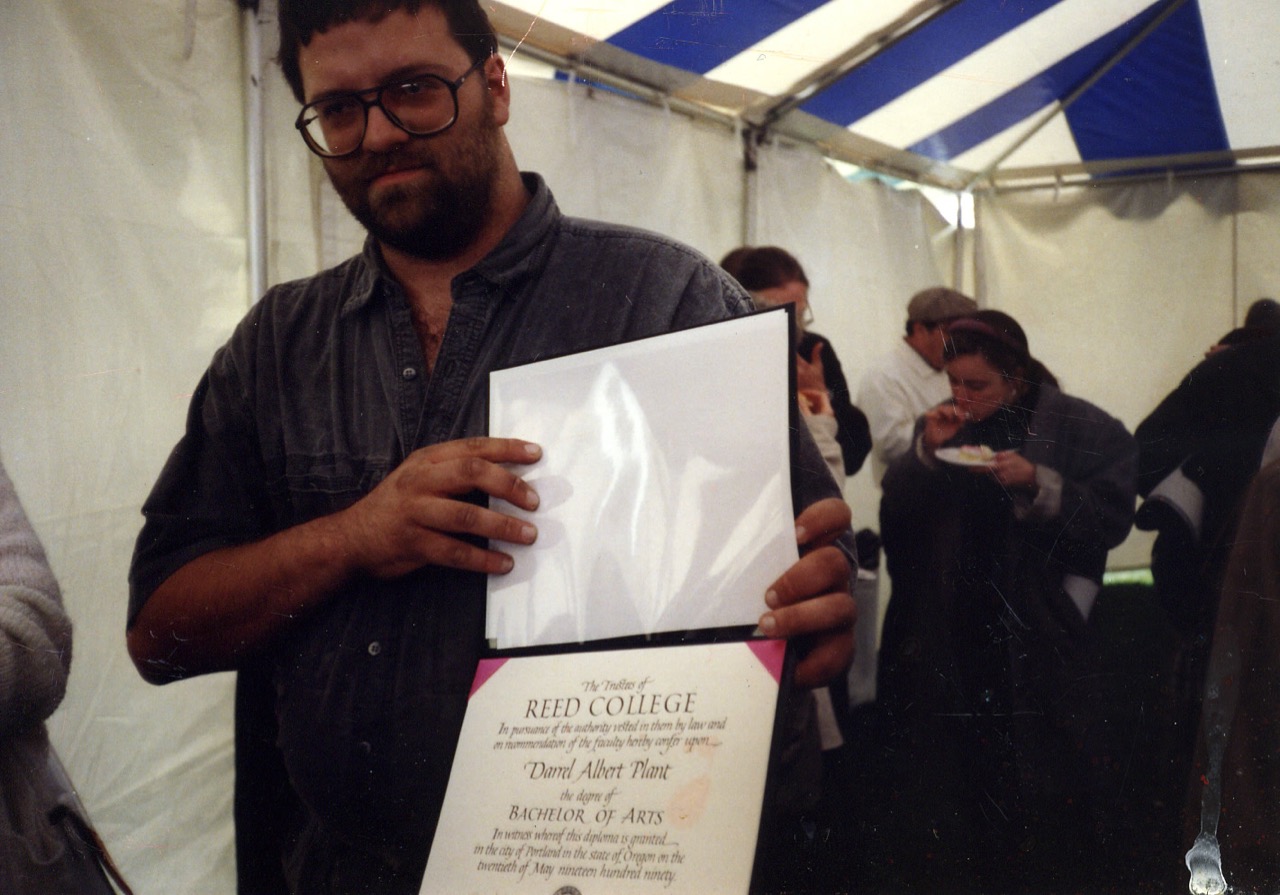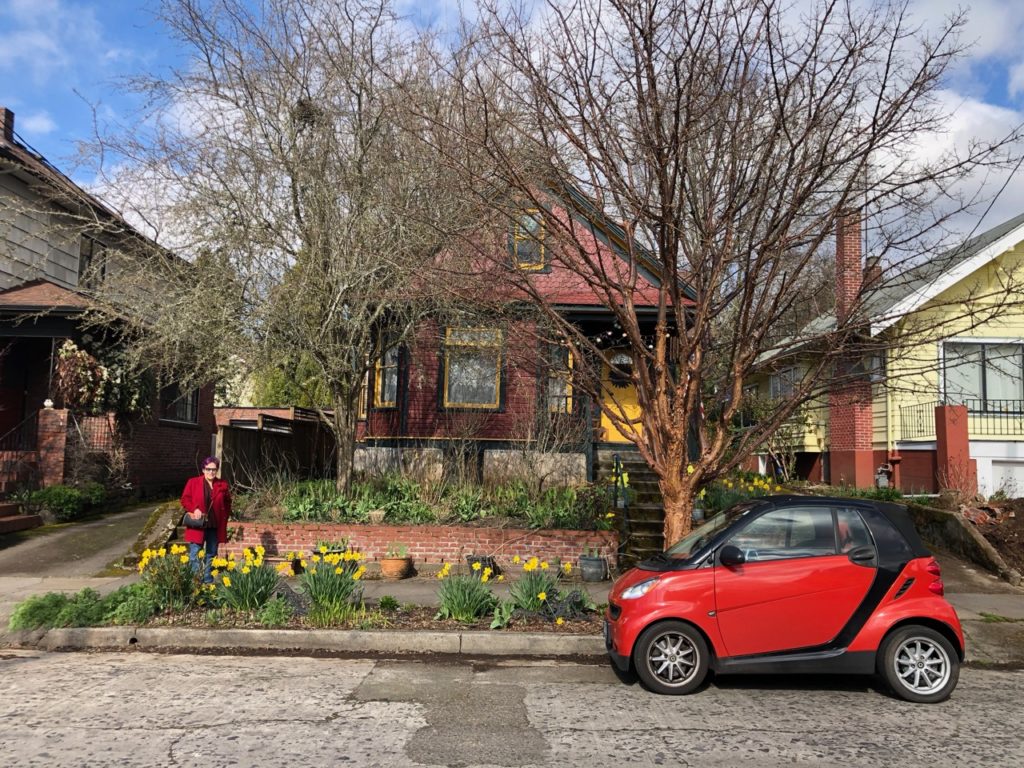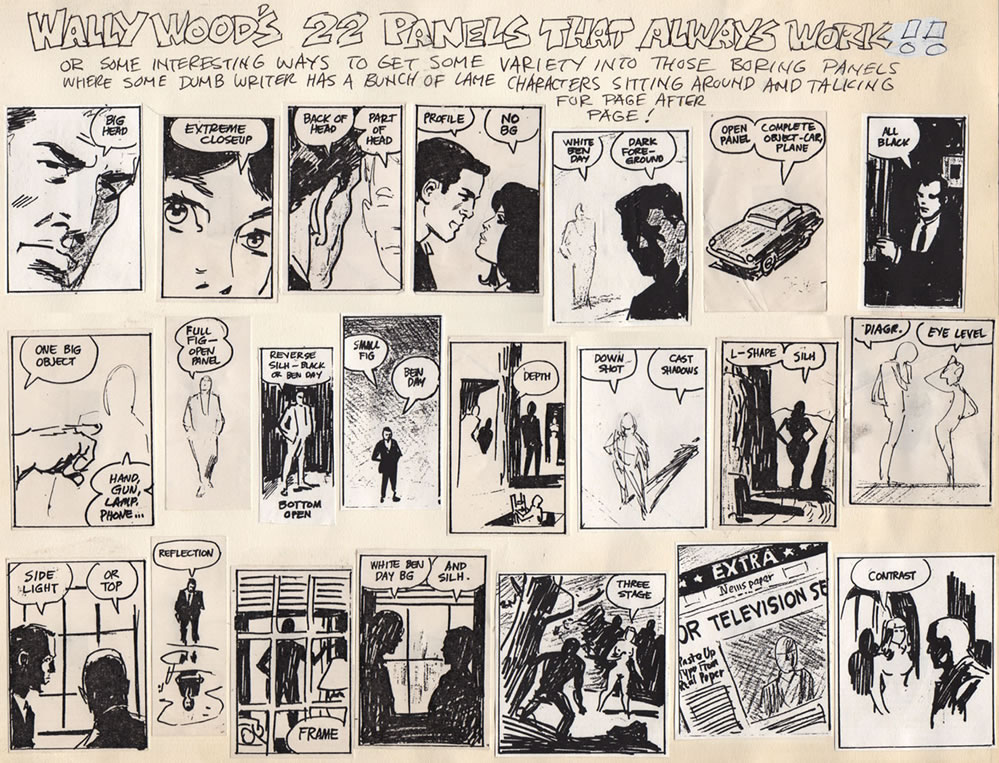New Year’s Eve 1995 was the turning point in my career in multimedia.
I’d been working in the relatively-new digital prepress field for four years when I quit my job at Exact Imaging and went out on my own as a freelance print production and graphics specialist with a sideline as a multimedia development instructor.
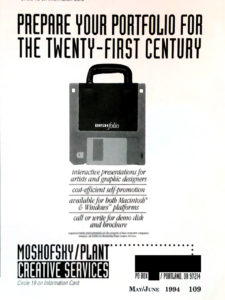
In a previous job (out of the six prepress jobs I held between mid-1991 and mid-1995) I’d picked up an unopened copy of Macromedia Director second-hand from a car dealership in Florida somehow. It was a couple of books and a bunch of diskettes. I had a fair amount of experience with everything from page layout applications to image editing to vector artwork tools, as well as some programming experience that was long in the tooth even then. I’d tried to break into the local CD-ROM development scene without any success and hung on the edges by editing the newsletter for the Portland chapter of the International Interactive Communication Society (of which I would eventually serve as the last vice-president, along with my current boss, Brad Smith as president(, even running an ad for a digital portfolio production service (which never got a single client) in an issue of Step-by-Step Graphics magazine (I had written an article on a graphic artist named Steve Cowden that ran in the same issue). The service never got any clients.
At a meeting of the IICS that summer, being in the right place at the right time landed me a shot at a somewhat steady stream of income to anchor my freelance business. Dr. Brad Hansen at the Portland State University School of Extended Studies announced he was looking for someone to teach Director as part of the school’s Professional Development Program. I dropped my name in the hat, and within a few weeks I was off to San Francisco to take the class I would be teaching from ex-Macromedia instructor Ken Durso. That got me the all-essential certification I needed to become a Macromedia-certified instructor and classes started up that fall.
This was still the early days of the public internet. Netscape Navigator was still the Web browser. Animated GIFs and the <blink> tag were the cornerstones of online animation; JavaScript was in its infancy and Java applets were the crème de la crème for interactive experiences but, y’know, Java. I managed to get down to the Macromedia User Conference at the end of October, where the buzz was about something new called Shockwave.
It was my first time at a UCON, so I didn’t know anyone or what all I was supposed to see, but if I remember correctly, the previews of Shockwave were held in smaller sessions, with an air of intrigue. The stuff we were shown was simply amazing, given the state of the Web art the time, which was largely static text and images, with hyperlinks.

My own focus had been on print, but the people managing operations at Exact Imaging—Sherwood Herben and Rick Hawley—had made an early move into network operations for transferring design files and previews of high-resolution scans back and forth between the shop and our clients, most of whom were in the high-tech industry. So I’d worked on the company web site. Then one of the projects I got tmy first summer from Dale Ott—my one big client when I got started and the guy I rented a cubicle space from—was the annual report for Sequent Computers, on which I did print prep and conversion to PDFs for online distribution, which was kind of a new thing. So I watched the presentation at Macromedia with some interest.
The whole thing about Director was its portability (more or less) between the Mac and Windows worlds. You could take most simple Director movie files from a Windows machine runnning a copy of Director and transfer them to a Mac running Director, open up the file, and then play it. Unfortunately, there were times when new tools on one platform lagged behind, and that first month or two after the public demos of Shockwave, you could make Shockwave movies (using a special compression tool called Afterburner) on either platform, but the playback engine—the browser plugin—only existed on Windows. And coming from the print industry—which was almost exclusively Mac—I did not have a Windows machine.
As soon as I was able to get onto the Shockwave beta—early December, I think—I made a Shockwave movie. But to see it, I ended up heading 30 miles out of town to Scappoose to Waldo Thompson’s house to see it because he would let me install the Shockwave plugin on his computer. I bought an Acer desktop and crammed it in my tiny workspace at Dale’s.
No idea at the time how to make money with the Shockwave. Meanwhile, the news on Shockwave dribbled out. There wasn’t even an official email list server for keeping the general public informed (there may have been for the private beta). To keep up on things, you had to visit what was essentially a blog page comment section (before there were blogs), which you had to manually reload.
That was the situation for me on New Year’s Eve, 1995. I was in the office late, doing some last-minute bookkeeping, and I checked the Shockwave page. There at the end was a note from someone who said they were a computer book literary agent who needed someone to write a book on Shockwave, and they needed them fast.
There were a couple of strikes against me on this. 1) I had never written anything as long as a book, in fact, I’d been telling people for several years that I thought that my undergraduate English thesis at Reed College was probably one of the shortest on record (I have no actual evidence that is true, but hey, 25 pages). And that took me months. Sure, I had to read a lot of research and Shakespeare, but I was going to have to do that for the book because 2) I hadn’t actually done anything professionally in Director—much less Shockwave—and as far as Macromedia knew, I did not exist. No inside information, no contacts, no expertise to make up for that. Bit I sent an email to David Rogelberg anyway.
By January 17th, 1996 I had a contract in hand to produce a Shockwave book full of tutorials for Ventana Press in 10 weeks for $15,000, a sum I was kind of agog at. If I could get the book done in 8 weeks, I’d get another $5,000. I never got up the gumption to ask what had happened. Books are typically put on publishing schedules months in advance, and as I got into the process of submitting content, I came to realize that this one had a lot of gears already in motion. For instance, the cover artwork—a hideous orange and green Frankenstein theme (on the US edition, the Korean cover above is more…subtle)—that carried through to the interface design for the accompanying CD-ROM (skillfully technically executed by Eric Coker). My suspicion was that the original authors assigned to the book got reassigned to a hotter project and they were in a bind, which is how they ended up with me.
I missed the 8-week deadline, but made the 10-week. Basically, the book was written with me looking through each of the specific capabilities of the commands in the NetLingo library, which were still only partially-documented in some cases. Figure out the variations. Figure out what they did. Figure out what they were used for (there weren’t examples for everything yet). Write tests to make sure I was right about how they worked. Then write up a tutorial about how to use it.
The book ended up at about 270 pages, mostly tutorials I’d devised by going through each of the (then) limited Lingo language commands for Director. I tried to figure out how each command was constructed (the documentation was still fairly sketchy) and then tried to figure out what it would be used for. I didn’t try to teach anyone how to use Director—that was a far larger project and way out of scope of what I could do in 8–10 weeks—but I think I did a decent job of conveying the basics. Even though I hadn’t actually created any of the DISKfolios apart from some demos, the fact that I had some expertise at crunching graphics down to their bare minimums to fit on a diskette came in handy, since everyone had been spreading out to fill up CD-ROMs.
I pressed local sound guru David Duddleston into service for the chapter on audio and inveigled my friend Jeff “Punk Rock” Martin to let me use a track from his band The Surf Trio for some audio. The book came in about 270 pages, with another 70 pages of references to projects by people like Dave Yang and Gary Rosenzweig (whose Director book came out from Ventana at about the same time as my Shockwave book did), some reference Appendices and an index.
And that was the only time I ever made money writing a book. Have a great 2021!

